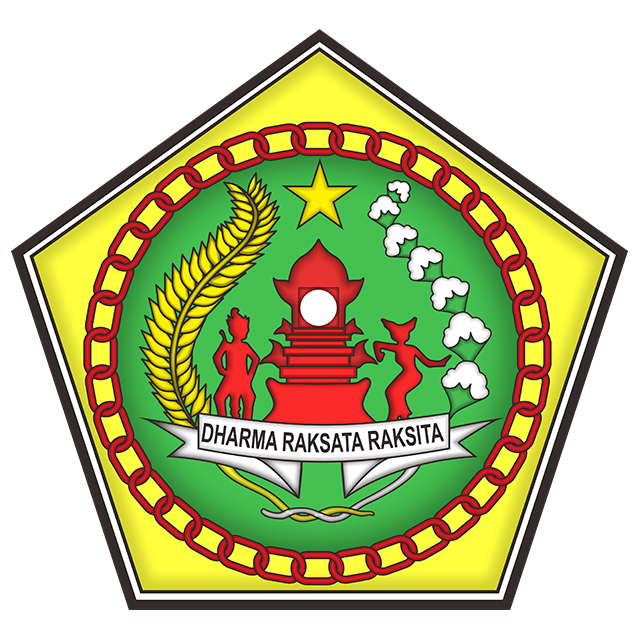

Destinasi Wisata
List Destinasi Wisata di Kabupaten Gianyar

Yeh Pulu
Yeh Pulu is a relief located near the Goa Gajah temple in Bedulu Village, approximately 26 kilometers from Denpasar. It is situated in the rice fields about 300 meters east of Batulumbang Hamlet.Yeh Pulu is located along the popular tourist route connecting Denpasar, Tampaksiring, and Kintamani, which offers access to numerous historical sites like Goa Gajah temple, Samuan Tiga, Pusering Jagat, Penataran Sasih, Kebo Edan, and others.The monument was initially discovered by Punggawa Ubud in 1925. It was later researched and published by the Dutch Colonial antiquities post, led by Dr. W. F Sutterhiem, in 1929.Yeh Pulu derives its name from the words “Yeh” (water) and “Pulu” (a container for storing rice). The relief is centered around a holy water source located west of the Yeh Pulu relief cluster.Yeh Pulu Relief is a stone carving, chiseled into a rock wall, measuring 25 meters long and 2 meters wide. The overall theme of the relief portrays the ancient Balinese way of life, both in the forest and within the kingdom.In addition to the classic Balinese sculptures, the monument features a king’s niche that houses a statue of the first king to face the Majapahit Empire’s army in 1343 CE.Yeh Pulu Relief is one of many historical monuments from Bali’s 14th-century Balikuno era (AD).It contains valuable knowledge that is still preserved and cherished by the Subak, a traditional Balinese organization dedicated to irrigation and agriculture. The Subak also oversees the rules and regulations governing rice farming practices in Bali.ReliefsThe Yeh Pulu site features a series of fascinating reliefs that tell a captivating story. According to historian Kempers, the reliefs should be viewed in order, starting from the north and moving southward. Here’s a closer look at what you can see as you explore the site:A Standing Man: This relief depicts a man standing tall, with his right hand raised and his left hand on his hip.A Woman and a Man with Pots: Next, you’ll see a woman in traditional attire walking ahead of a man carrying two pots. They are heading towards an open-door house.A Man with a Hoe and a Woman on a Rock: Here, a man wielding a hoe stands before a woman seated on a rock. Nearby, a woman stands with her back to a turbaned hermit.A Man on a Horse and a Tiger Attack: This scene showcases a man riding a horse. In front of him, two men are under attack by a tiger—one man’s hand is bitten as he tries to defend himself.Hunters and a Woman with a Horse: Another relief depicts two men carrying hunted animals. On the opposite side, a woman is holding the tail of a horse ridden by a man.Ganesha in a Niche: The final relief features the serene figure of Ganesha seated in a niche.These reliefs not only provide a glimpse into historical art but also offer insights into the narratives and daily life of the past.Here are some additional points to consider when visiting Yeh Pulu.Accessibility: While Yeh Pulu is relatively easy to find, it might be helpful to have a local guide or refer to a detailed map to ensure you don’t miss any of the reliefs.Cultural Significance: The reliefs at Yeh Pulu are not only historical artifacts but also hold cultural significance for the local community. It’s important to approach the site with respect and appreciation for its value.Nearby Attractions: Given its proximity to Goa Gajah, Yeh Pulu can be easily combined with a visit to this renowned temple. Exploring both sites will provide a deeper understanding of the region’s history and culture.

Tirta Empul
Tirta Empul Temple is situated within the village of Manukaya, Sukawati District, Gianyar. Tampaksiring is a nearby village located 36 kilometers from Denpasar.Pura Tirta Empul is a historical relic in Bali, one of the few ancient sites still preserved and renowned within the village. Adjacent to the temple, on higher ground, is the Presidential Palace built during the administration of President Sukarno.Regarding the name of the temple, it is believed to be derived from the springs located within it, known as Tirta Empul. Etymologically, “Tirta Empul” suggests water that gushes out from the bottom.Tirta Empul water flows into the Pakerisan stream. Along the stream, you can find several ancient relics. The temple’s establishment dates back to around 960 AD during the reign of King Chandra Bhayasingha Warmadewa. Like many Balinese temples, Tirta Empul is divided into three main sections: Jaba Pura (Outer Courtyard), Jaba Tengah (Central Courtyard), and Jeroan (Inner Sanctum).In the Middle Jaba, there are two long rectangular pools. The pools feature thirty shower areas lined up from east to west, facing south. Each shower, according to tradition, has its own unique name, such as Pengelukatan, Pebersihan, Sudamala, and Cetik.The names Cetik and Tirta Empul are connected to a mythological battle between King Mayadenawa of Stone Anyar (Bedahulu) and the Hindu deity Batara.Mythology tells that King Mayadenawa was arbitrary and refused to allow people to perform religious ceremonies to seek salvation from God Almighty.When the gods deemed Mayadenawa’s actions unacceptable, they, led by the Hindu deity Batara, attacked him. Mayadenawa was eventually defeated and fled, reaching the village of Tampaksiring.As a result of his powers, Mayadenawa created a poisonous spring, known as Cetik. This led to the deaths of several of Lord Hindu deity’s paramilitary troops who drank the water. Upon witnessing this, Lord Hindu deity immediately plugged the spring and caused pure water to flow from the bottom (Tirta Empul). This water was used by the gods to purify themselves and ensure they would not be affected by the poison again.Non-Hindu tourists can participate in pelukatan (purification at Pancoran), but must adhere to the temple’s rules.At Tirta Empul, visitors are required to wear a sarong to cover their lower body and a scarf tied around their waist. Women should refrain from participating during menstruation. A rental counter at the temple entrance provides sarongs and scarves for visitors who need them.The best time to visit Tirta Empul is during the full moon, when many Hindus come for prayers. For Visiting Tirta Empul here are some additional points to considerCultural Significance: Tirta Empul is not only a place of religious significance but also holds cultural importance for the Balinese people. It is a symbol of purification and renewal, and many Balinese Hindus visit the temple regularly to perform rituals and seek blessings.Architectural Features: The temple’s architecture is typical of Balinese Hindu temples, with a focus on symmetry, balance, and harmony. The intricate carvings and sculptures throughout the complex are a testament to the skill and craftsmanship of Balinese artisans.Nearby Attractions: Tirta Empul is located in a beautiful and scenic area. There are several other interesting attractions nearby, including the Gunung Kawi Temple complex, the Tegallinggah rock-cut temple, and the Goa Gajah cave temple.Tips for Visitors: If you plan to visit Tirta Empul, it’s important to be respectful of the temple’s rules and customs. Dress modestly and avoid wearing revealing clothing. Also, be mindful of the temple’s spiritual atmosphere and avoid making noise or disturbances.

Mengening Temple
Mengening Temple is located in Banjar Sareseda, Tampaksiring Village. This temple is an ancient site in Gianyar – Bali, a relic from the reign of King Marakata in 1022 AD. There are fascinating artifacts around this area, and several sacred springs can also be found here. Fish ponds filled with large freshwater fish can be found here. This place is ideal for a spiritual journey, offering a serene environment for prayer and meditation. It is surrounded by large trees and natural spring water sources. The staircase at the main entrance is slightly steep. The entrance fee for Mengening Temple is Rp 30,000 for adults and Rp 15,000 for children.Mengening Temple was first discovered by W. F. Stutterheim between 1925 and 1927, although it was not detailed at that time. Later, in 1960, Bernet Kempers reported the existence of a temple with remnants of the structure located on the top of a small hill.According to the report, excavation and research revealed the temple in an incomplete state, along with a Yoni phallus located in the temple hall, which is considered sacred by the local community.The temple is situated in the Pakerisan River valley, an area rich in water sources. The water is collected in a pond and flows through a shower. The Pancoran at Pura Mengening is used for both religious ceremonies and agricultural irrigation, with the water channeled through the Pakerisan River.This site is very interesting to visit; in addition to exploring the relics of ancient kings, you can also admire the beautiful river. The river’s water is used to irrigate the surrounding rice fields and extends to the Pejeng and Bedulu areas.Near Mengening Temple, you’ll find Tirta Empul Temple. To the south, there is also Gunung Kawi Tampaksiring Temple. While you need to take the main road to reach it, it’s not far from Mengening Temple. The best itinerary for visiting these sites is to start at Gunung Kawi Tampaksiring, then head to Mengening Temple, and finally visit Tirta Empul Temple. After your journey, you can relax and enjoy a local meal around the Tirta Empul Temple parking area.Things To Do At MengeningAt Mengening Temple, visitors can enjoy a variety of meaningful and cultural experiences:Purification Ritual: The highlight of your visit is the sacred purification ritual. Here, you can bathe under 30 water spouts in the holy pools, which is believed to cleanse both body and soul, offering a sense of spiritual renewal.Explore the Temple: Take a peaceful stroll through the three main sections of the temple—Jaba Pura (outer courtyard), Jaba Tengah (central courtyard), and Jeroan (inner courtyard). You’ll find ancient architecture, intricate stone carvings, and a deep sense of history.Witness Cultural Ceremonies: If you’re lucky to visit during a religious festival or ceremony, you can witness traditional Balinese rituals, where locals offer prayers and make offerings, creating an unforgettable spiritual atmosphere.Discover the Mythology: Learn about the captivating legend of King Mayadenawa and Batara Indra, a story that adds layers of meaning to the temple and its sacred waters.See the Presidential Palace: Perched above the temple, the palace built during President Sukarno’s era offers beautiful views and a glimpse into Indonesia’s modern history.Relax and Reflect: With its serene environment, lush greenery, and tranquil atmosphere, Mengening Temple is the perfect place to relax, meditate, or simply enjoy the peaceful surroundings.Some caution when entering the templeIf general tourists wish to enter the temple area, there are several rules they must be aware of and follow. This is because the temple’s primary function is not as a tourist site, but as a place of worship.Just like in other places of worship, there are sacred objects in the temple that should not be touched or handled carelessly. Never touch any buildings, items, or objects in the temple without permission from the temple’s caretaker or your guide. Some items, like stones on an altar, may seem ordinary, but to the locals, they are considered very sacred. Avoid touching them, and never sit on them.It’s also important to refrain from using foul or disrespectful language in the temple, as it is a sacred space.When entering the temple, travelers must wear appropriate clothing. This means covering areas that should remain private, such as the chest, hips, thighs, and similar parts of the body.Women are not allowed to enter the temple or sacred areas within the temple grounds during menstruation. This rule is important for maintaining the temple’s sanctity and ensuring personal safety.It is recommended to have someone accompany you in the temple, or you can hire a local guide to provide accurate information about the temple. Be sure to ask about their rates and agree on the price beforehand.Entrance Fee

Ubud Open Studio
Acara yang memberikan kesempatan bagi pengunjung untuk mengunjungi studio seniman lokal di Ubud. Biasanya diselenggarakan pada akhir Mei, acara ini memungkinkan interaksi langsung dengan seniman dan memahami proses kreatif mereka. Ini adalah kesempatan unik untuk melihat karya seni dari dekat dan mungkin membawa pulang karya seni orisinal.
19 Feb 2025 · Administrator

Ubud Food Festival
Festival kuliner yang merayakan kekayaan gastronomi Indonesia, khususnya Bali. Diadakan pada akhir Mei, acara ini menampilkan demo masak, diskusi panel, dan tentu saja, kesempatan untuk mencicipi berbagai hidangan lezat. Festival ini menarik koki terkenal, penulis kuliner, dan pecinta makanan dari berbagai penjuru.
18 Feb 2025 · Administrator

Celuk Jewelry Festival
Festival yang berlangsung di Desa Celuk, Gianyar, dikenal sebagai pusat kerajinan perak di Bali. Acara ini biasanya diadakan pada pertengahan Juni dan menampilkan pameran perhiasan perak buatan tangan, workshop, dan demonstrasi pembuatan perhiasan. Pengunjung dapat membeli perhiasan langsung dari pengrajin dan bahkan mencoba membuat perhiasan sendiri.
17 Feb 2025 · Administrator

Ubud Open Studio
Acara yang memberikan kesempatan bagi pengunjung untuk mengunjungi studio seniman lokal di Ubud. Biasanya diselenggarakan pada akhir Mei, acara ini memungkinkan interaksi langsung dengan seniman dan memahami proses kreatif mereka. Ini adalah kesempatan unik untuk melihat karya seni dari dekat dan mungkin membawa pulang karya seni orisinal.
19 Feb 2025 · Administrator

Ubud Food Festival
Festival kuliner yang merayakan kekayaan gastronomi Indonesia, khususnya Bali. Diadakan pada akhir Mei, acara ini menampilkan demo masak, diskusi panel, dan tentu saja, kesempatan untuk mencicipi berbagai hidangan lezat. Festival ini menarik koki terkenal, penulis kuliner, dan pecinta makanan dari berbagai penjuru.
18 Feb 2025 · Administrator

Celuk Jewelry Festival
Festival yang berlangsung di Desa Celuk, Gianyar, dikenal sebagai pusat kerajinan perak di Bali. Acara ini biasanya diadakan pada pertengahan Juni dan menampilkan pameran perhiasan perak buatan tangan, workshop, dan demonstrasi pembuatan perhiasan. Pengunjung dapat membeli perhiasan langsung dari pengrajin dan bahkan mencoba membuat perhiasan sendiri.
17 Feb 2025 · Administrator
gianyarkab.go.id
jegegbagusgianyar.or.id


